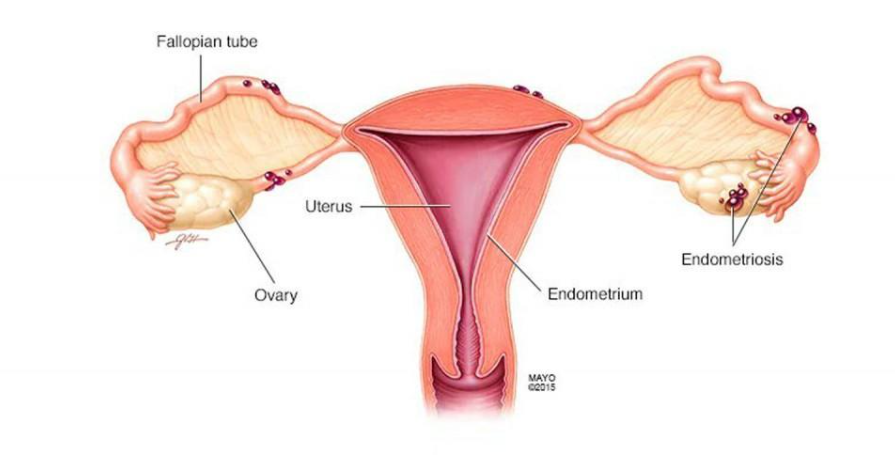Endometriosis is a chronic condition associated with pelvic pain, painful periods, infertility, and poor quality of life. It is estimated to affect 10% of women but likely affects many more due to underreporting of this disease. There is much more still to be learned about endometriosis. We share what we know here and dispel common/outdated myths.
Myth#1 Endometriosis is just painful periods
The classic symptom of endometriosis is painful periods, but endometriosis is associated with many other quality of life-limiting symptoms. Other common symptoms include: pain with intercourse, pain with bowel movements, pain with urination, frequent urination, blood in the stool or urine, abdominal bloating, fatigue, and pelvic pain outside of the menstrual cycle. Pain that occurs outside of the menstrual cycle is often not recognized as endometriosis due to the belief that the pain needs to be associated with menstruation. Other very rare manifestations of endometriosis include chest pain or a collapsed lung. This can be seen with endometriosis of the diaphragm or lung.
Myth #2 Endometriosis is caused by retrograde menstruation
Although retrograde menstruation is one theory of how endometriosis develops, we now know that there is more to the story. Endometriosis cells are similar to but distinct from the cells that line the uterine cavity called the endometrium. Endometriosis cells secrete their own estrogen, essentially producing a stimulus for more endometriosis cells to grow. Endometriosis can also be found in locations outside of the pelvis such as the lung and brain. Finally, postmenopausal women and children are populations who do not menstruate, yet endometriosis has been found in both groups.
Myth #3 Hysterectomy and removal of the ovaries cures endometriosis
Unfortunately there is no guaranteed cure for endometriosis, but symptoms can be managed with medication and disease can be removed with surgery. It used to be thought that a hysterectomy with removal of the ovaries was a cure for endometriosis, but now we know this is not completely true. Because endometriosis cells secrete their own estrogen, endometriosis can persist even after the uterus and ovaries are removed. This explains why some people continue to have problems despite having had a hysterectomy or having gone through menopause. All disease must be removed and often it is recommended to continue taking medication after surgery to suppress the overproduction of estrogen and prevent disease recurrence.
Myth #4 A negative ultrasound means no endometriosis
There are three general types of endometriosis: superficial endometriosis, endometriosis of the ovary (endometriomas), and deep infiltrating endometriosis. Endometriomas and endometriosis that is thick and grows deep into other structures may be seen on imaging but this depends on the quality of the ultrasound or MRI. Superficial endometriosis is very small and grows only on the lining of structures, making it impossible to detect on imaging.


